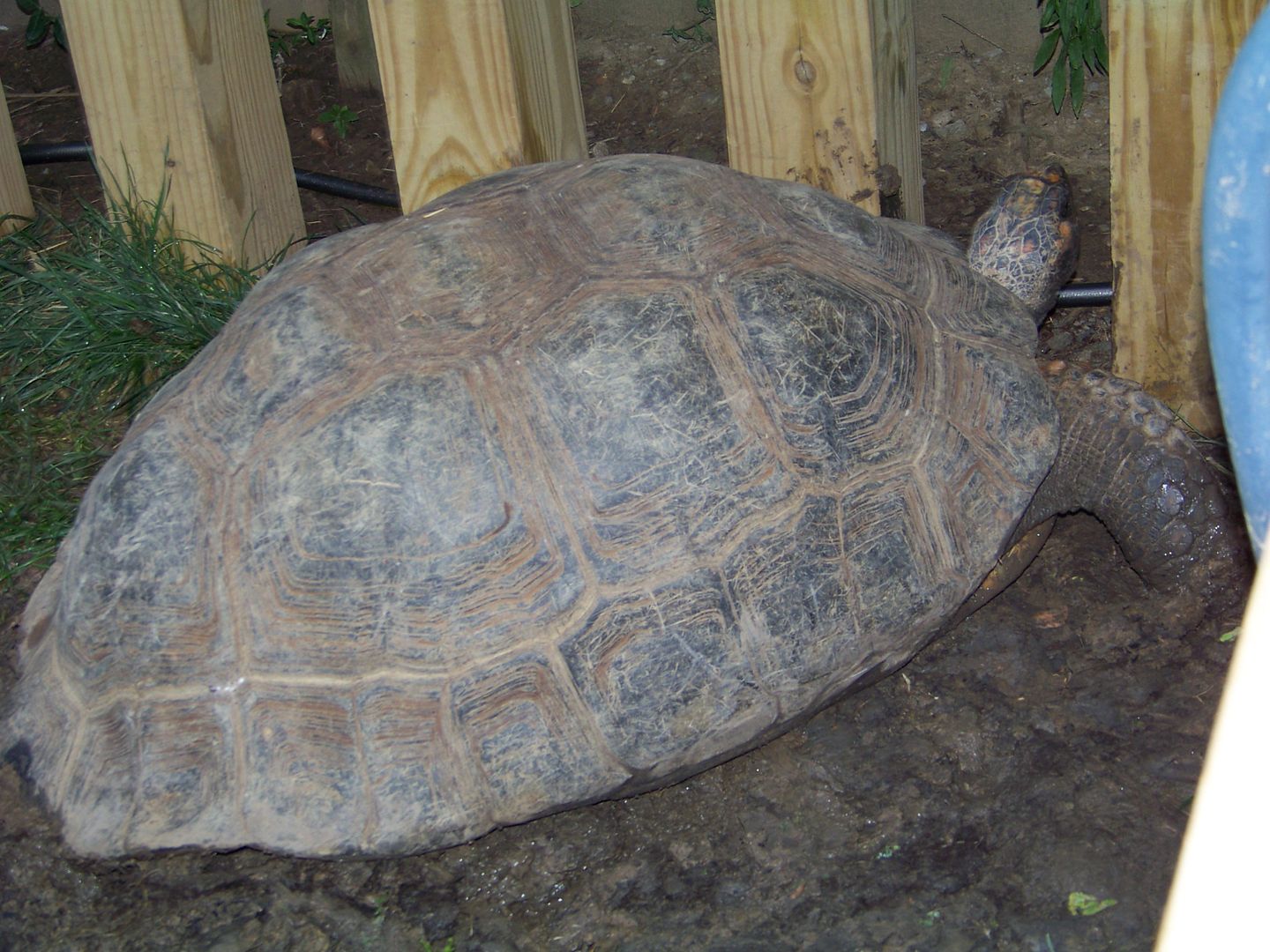Eric makes an interesting point. The 'giant' red- and yellow-footeds do not seem to follow a lot of rhyme or reason in their locations (other than the southern reds being bigger, usually, than the northerns). There is a LOT of speculation about that- races or gene pools, dietary availability, other quirks, or just plain lucky enough to live long enough to get really big? I tend to think it is mostly the latter- lots of reptiles, fish, etc. just grow all their lives.
Also, "Vargas-Ramirez, Mario and Jerome Maran, Uwe Fritz. "Red- and yellow-footed tortoises, Chelonoidis carbonaria and C. denticulata (Reptilia: Testudines: Testudinidae), in South American savannahs and forests: do their phylogeographies reflect distinct habitats?" Organisms, Diversity and Evolution, 2010." shows little genetic variation in yellow-foot, unlike the 5 groups of red-foot he found.
I think, and this is strictly my opinion, that the phrase 'Amazon Basin' here is a marketing tool, like the thankfully dwindling use of 'dwarf' for some cherry-heads... which is also a marketing term for Eastern or Brazilian reds.
Also, "Vargas-Ramirez, Mario and Jerome Maran, Uwe Fritz. "Red- and yellow-footed tortoises, Chelonoidis carbonaria and C. denticulata (Reptilia: Testudines: Testudinidae), in South American savannahs and forests: do their phylogeographies reflect distinct habitats?" Organisms, Diversity and Evolution, 2010." shows little genetic variation in yellow-foot, unlike the 5 groups of red-foot he found.
I think, and this is strictly my opinion, that the phrase 'Amazon Basin' here is a marketing tool, like the thankfully dwindling use of 'dwarf' for some cherry-heads... which is also a marketing term for Eastern or Brazilian reds.




